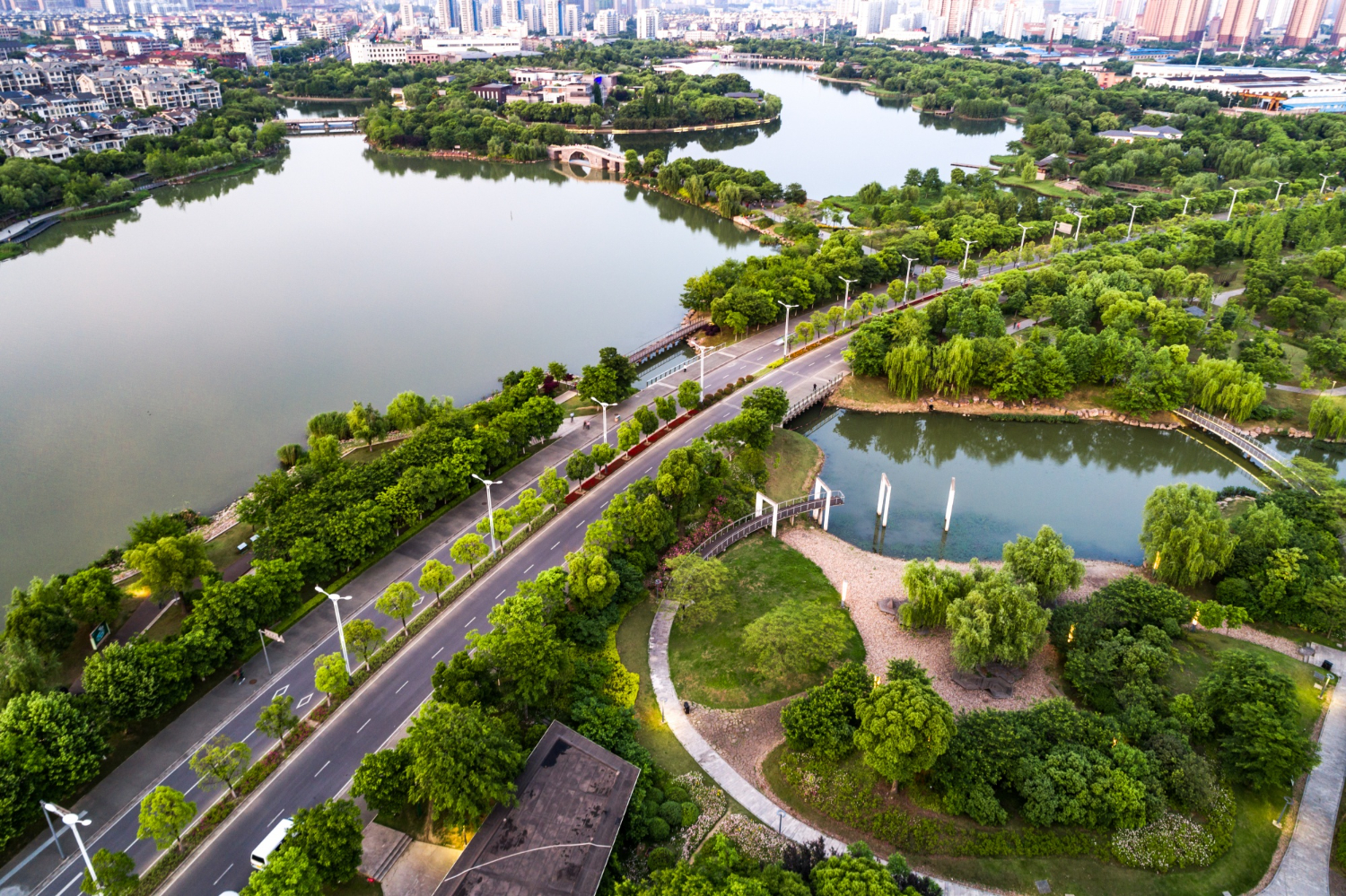Sustainability is not just a passing trend; it’s an essential approach for cities worldwide as they tackle challenges like climate change, population growth, and environmental degradation. A sustainable city strives to meet the needs of its population without compromising the ability of future generations to do the same.
This involves balancing environmental preservation, economic growth, and social well-being.
In this article, we will explore 10 cities that are leading the charge in sustainable urban development. The focus is on the aspects that make them stand out as examples of sustainability in action.
1. Copenhagen, Denmark – Green Energy and Cycling Infrastructure
Copenhagen, Denmark’s capital. It is widely regarded as one of the most sustainable cities in the world, with ambitious plans to become carbon-neutral by 2025. One of the key elements that contribute to Copenhagen’s sustainability is its transition to green energy. Over 40% of the city’s energy comes from renewable sources, including wind, solar, and biomass.
The city is also making significant strides in expanding offshore wind farms and utilizing district heating systems to reduce reliance on fossil fuels. Alongside this, Copenhagen has developed a strong cycling culture. People ride more bicycles than they drive cars. There are dedicated bike lanes, bike-sharing programs and a bike-friendly traffic system. this makes the cycling process practical and safe.
As a result, Copenhagen has reduced carbon emissions and congestion in the city, while promoting healthier living. Also notable is the fact that the city’s commitment to sustainable architecture is evident. Evidence of this can be seen in buildings like the UN City. The building is designed to meet the highest energy efficiency standards.
2. Amsterdam, Netherlands – Water Management and Green Spaces
Amsterdam is another prime example of a sustainable city. In particular, the city is known for innovative water management and integration of green spaces into urban life.
The city is built on a series of canals. With the rising threat of sea-level rise, maintaining water management systems is crucial to ensuring its survival. Amsterdam employs an intricate network of pumps, dikes, and flood barriers to protect the city from flooding. This makes the city a global leader in water management technologies.
The city also promotes green living through its urban planning, offering extensive green spaces like parks, urban forests, and green roofs. These spaces help improve air quality, reduce the urban heat island effect, and enhance the overall quality of life for residents.
Also, Amsterdam is advancing towards a circular economy, encouraging recycling and resource efficiency among businesses and citizens.
3. Vancouver, Canada – Natural Resource Management and Eco-Friendly Transit
Vancouver, Canada, is another city that places a strong emphasis on sustainability. It is surrounded by stunning natural landscapes. Vancouver recognizes the importance of preserving its environment while also providing a high standard of living. One of Vancouver’s standout features is its commitment to sustainable urban planning.
The city has focused on reducing urban sprawl, opting instead for dense, mixed-use neighborhoods that reduce the need for cars. This design not only encourages walking and cycling but also lowers greenhouse gas emissions by decreasing dependence on personal vehicles.
Vancouver’s public transit system, which includes buses, the SkyTrain, and the SeaBus, is extensive and continues to expand, helping to reduce congestion and further lower emissions. Vancouver has set a goal to be carbon-neutral by 2050, and this commitment is visible in the city’s support for energy-efficient buildings, renewable energy projects, and green technologies.
4. Stockholm, Sweden – Waste Management and Renewable Energy
Stockholm has long been considered one of the most sustainable cities in Europe, thanks to its forward-thinking policies on waste management and renewable energy. The city is particularly known for its waste-to-energy system, which helps reduce landfill use while generating electricity and heat. This system incinerates waste to produce energy, effectively turning what would have been discarded into a valuable resource.
In addition, approximately 80% of Stockholm’s energy comes from renewable sources, such as hydropower, wind, and biomass. Stockholm has also set an ambitious target to be fossil fuel-free by 2040, focusing on making public transport, buildings, and industries more energy-efficient.
The city’s commitment to green spaces is another key factor, as it offers an abundance of parks and nature reserves, which not only benefit the environment but also provide residents with essential recreational spaces.
5. Curitiba, Brazil – Efficient Public Transport and Urban Green Spaces
Curitiba, located in southern Brazil, is widely recognized as a leader in sustainable urban planning, particularly due to its innovative public transportation system and focus on green spaces. The city pioneered the Bus Rapid Transit (BRT) system, a highly efficient and affordable method of public transport that has been adopted by many other cities around the world.
Curitiba’s BRT system utilizes dedicated bus lanes, allowing for quick and reliable service while reducing traffic congestion and air pollution. The city is also known for its commitment to urban green spaces, with more than 50 square meters of green space per person.
This abundance of parks and green areas helps to improve air quality, reduce the urban heat island effect, and provide residents with much-needed outdoor recreational areas. Curitiba also runs an innovative recycling program where residents can exchange recyclable materials for bus tickets or food, further encouraging sustainability in the community.
6. Oslo, Norway – Carbon Emission Reduction and Green Mobility
Oslo, the capital of Norway, is a city that has made significant strides in reducing its carbon emissions and promoting green mobility. The city has set ambitious goals to become the first city in the world to fully decarbonize its transport sector. A major part of this effort involves the promotion of electric vehicles (EVs).
Oslo has one of the highest rates of EV ownership in the world, thanks in part to tax incentives and an extensive network of charging stations. The city is also transitioning to electric buses, waste collection vehicles, and even electric ferries, further reducing its environmental impact.
In addition to green mobility, Oslo focuses on a sustainable urban design by creating pedestrian-friendly spaces and reducing car traffic in the city center. Green roofs, energy-efficient buildings, and the use of renewable energy sources all contribute to Oslo’s overall sustainability efforts.
7. Singapore – Urban Farming and Water Conservation
Singapore is a city-state that is embracing sustainability through innovative solutions designed to address its limited land and water resources. Known as the “City in a Garden,” Singapore integrates nature into its urban spaces through extensive green infrastructure, including rooftop gardens and vertical farming.
Urban farming plays a key role in the city’s strategy to produce more of its own food. The city has invested heavily in vertical farming techniques, which allow food to be grown in high-rise buildings, and aims to produce 30% of its nutritional needs locally by 2030.
Water conservation is another critical aspect of Singapore’s sustainability strategy. With limited natural freshwater resources, the city developed the NEWater project, which recycles treated wastewater into high-quality drinking water, ensuring a reliable and sustainable water supply.
Singapore’s commitment to green building standards and its extensive network of parks and nature reserves also help to make the city more sustainable.
8. Portland, Oregon, USA – Sustainable Food Systems and Eco-Friendly Housing
Portland, Oregon, is known for its progressive environmental policies and commitment to sustainability in both urban planning and lifestyle. One of the city’s key initiatives is promoting sustainable food systems. Portland supports local and organic food production through urban farms, farmers’ markets, and community gardens.
This approach helps to reduce food miles, decrease carbon emissions, and provide residents with access to fresh, healthy food. The city is also at the forefront of eco-friendly housing, encouraging energy-efficient construction and the retrofitting of existing buildings to meet green standards.
Portland’s goal of achieving zero waste by 2030 is another important sustainability target. The city encourages recycling, composting, and upcycling, with many programs designed to reduce waste generation and increase resource recovery.
9. Freiburg, Germany – Solar Energy and Community Engagement
Freiburg, located in southwestern Germany, is often referred to as the “Solar Capital” due to its commitment to solar energy and its role as a pioneer in renewable energy initiatives. The city has one of the highest numbers of solar panels per capita in the world, with thousands of installations on homes, businesses, and public buildings.
This commitment to solar power helps reduce the city’s carbon footprint and contributes to the global push for renewable energy. Freiburg also promotes energy-efficient construction and retrofitting of buildings to meet high environmental standards, with passive houses being a common feature in the city.
A unique aspect of Freiburg’s sustainability efforts is its focus on community engagement. The city actively involves residents in sustainability initiatives, supporting green projects like urban gardening and eco-friendly transportation solutions.
10. Melbourne, Australia – Green Building Standards and Sustainable Transport
Melbourne, one of Australia’s largest cities, is making great strides in sustainability through initiatives focused on green building standards, sustainable transport, and urban greening. The city has implemented strict green building standards, such as the Green Star rating system, which ensures that new buildings meet high environmental performance benchmarks in energy, water, and materials.
In addition, the city’s public transport system, which includes trams, trains, and buses, is continually expanding to reduce car dependency and ease traffic congestion. Melbourne’s commitment to urban greening is also notable, with the Urban Forest Strategy aiming to increase the city’s tree canopy, improve air quality, and reduce the urban heat island effect.
These efforts not only help the environment but also provide residents with much-needed access to green spaces in the heart of the city.
Conclusion
The cities highlighted in this article are Copenhagen, Amsterdam, Vancouver, Stockholm, Curitiba, Oslo, Singapore, Portland, Freiburg, and Melbourne. These cities showcase what is possible when urban planning, sustainability, and innovative technologies come together.
These cities are tackling pressing environmental issues such as climate change, resource depletion, and pollution. At the same time, they improving the quality of life for their residents. As urbanization continues to accelerate globally, these cities serve as models for others to follow.
By embracing green energy, efficient public transport, sustainable architecture, and community engagement, we can create cities that not only meet the needs of today but also protect the planet for future generations.
Frequently Asked Questions (FAQs)
1. What makes a city sustainable?
A sustainable city integrates environmental preservation, social well-being, and economic growth into its planning. This includes reducing pollution, conserving resources, promoting clean energy, and ensuring a high quality of life for its residents.
2. How do cities promote sustainability?
Cities promote sustainability through initiatives like renewable energy adoption, green building standards, efficient public transportation, waste reduction programs, and the creation of green spaces.
3. Which city is the most sustainable?
Copenhagen is often regarded as the most sustainable city due to its ambitious goal of becoming carbon-neutral by 2025, its extensive cycling infrastructure, and its use of renewable energy sources.
4. Can other cities replicate these sustainable practices?
Yes, many cities can replicate these sustainable practices. The key is implementing policies that focus on reducing carbon emissions, improving energy efficiency, promoting public transport, and involving the community in sustainability efforts.
5. How can I contribute to making my city more sustainable?
You can contribute by reducing energy consumption, recycling, using public transport or cycling. Also, you can support local and sustainable businesses, and advocate for green policies in your community.

